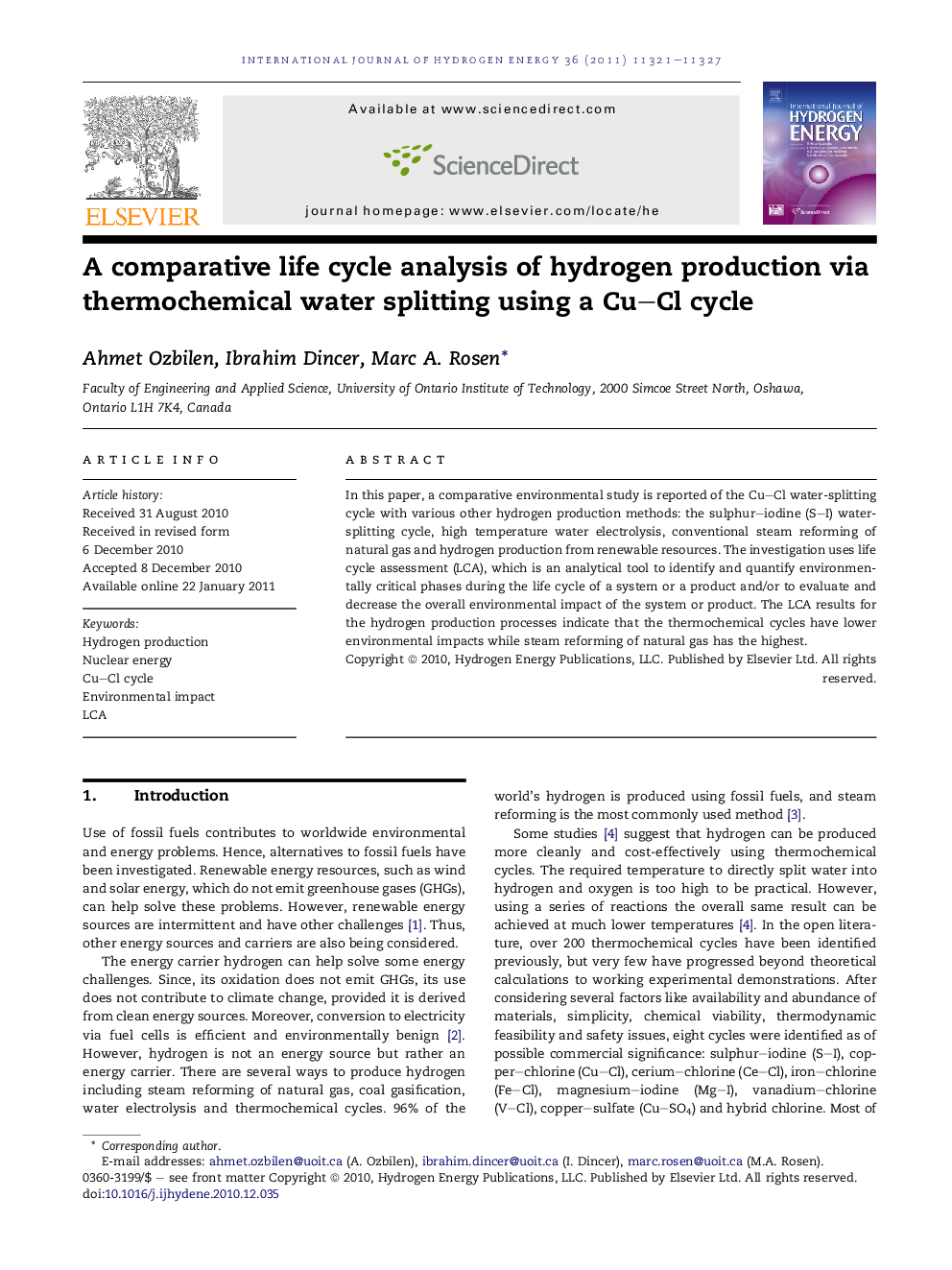| کد مقاله | کد نشریه | سال انتشار | مقاله انگلیسی | نسخه تمام متن |
|---|---|---|---|---|
| 1277605 | 1497576 | 2011 | 7 صفحه PDF | دانلود رایگان |

In this paper, a comparative environmental study is reported of the Cu–Cl water-splitting cycle with various other hydrogen production methods: the sulphur–iodine (S–I) water-splitting cycle, high temperature water electrolysis, conventional steam reforming of natural gas and hydrogen production from renewable resources. The investigation uses life cycle assessment (LCA), which is an analytical tool to identify and quantify environmentally critical phases during the life cycle of a system or a product and/or to evaluate and decrease the overall environmental impact of the system or product. The LCA results for the hydrogen production processes indicate that the thermochemical cycles have lower environmental impacts while steam reforming of natural gas has the highest.
Journal: International Journal of Hydrogen Energy - Volume 36, Issue 17, August 2011, Pages 11321–11327